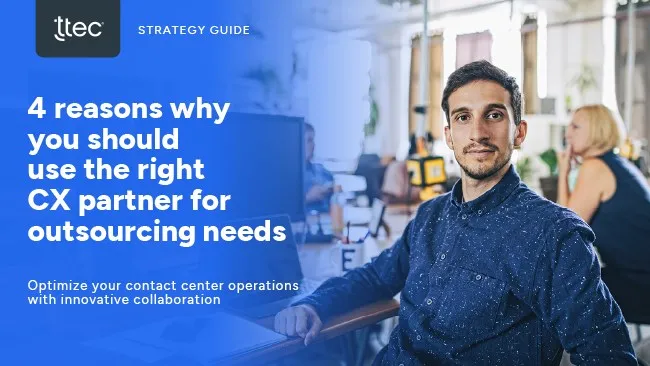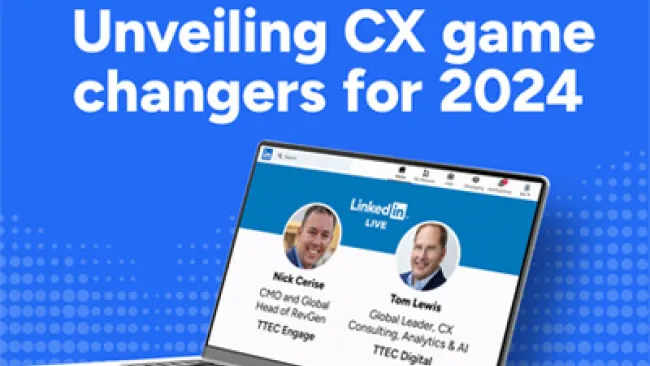Do you ever need to deliver digital presentations, communicate with senior leaders and colleagues, or pitch to clients online via webinar and video?
How do we maintain a connection, project energy, and drama, speak, move, and maintain eye contact in order to personalize our message? Simply keeping participants fully engaged and maintaining their attention, interest, and curiosity whilst delivering a clear and compelling message is often hard enough. Adding a virtual element is another layer of complexity.
Presenting face to face can be an onerous task for even the most experienced business professional. And with business today, we are increasingly called on to do it digitally. In fact, it is increasingly ‘the norm’ in a world of managing teams remotely, home working and global client management.
At TTEC, we understand completely the challenges professionals face when presenting. Our heritage is both Off Broadway theatrical face-to-face conference communication and desktop, contact centre, technology-based education and service communication. In our work with clients and CX leaders, we’ve developed nine keys to delivering powerful digital presentations:
1. Know what you’re up against with your audience and technology
I recently attended an online presentation whilst preparing a face-to-face training slide deck, accepting a LinkedIn connection request, and responding to an email. It’s not great I know, but research suggests that the human mind is conditioned to wander 47 percent of the time. When you’re attending an online presentation and are not only invisible but have access to a wide range of other distractions, I’m sure that number soars.
So the first key is get real and be aware of your challenge.
With face-to-face presentations, the audience can be guilted into putting down the phone. With digital presentations, you must hook them in and interact with them to engage their curiosity and perceived value.
2. Grab them with a valuable promise
Which do you think is more likely to grab and keep your attention?
- A promise of something that will make a tangible difference to your business and life
- I want to talk through 5 main agenda items
If it’s an agenda, if it’s a list, or if its information—Email it.
If you are seeking a decision, engagement, or energy, give them something to be energized about. Start with a statement that represents the value they will receive. Will it make money, save money, save time? If so, how much? Will it make the experience of living or working more enjoyable, easy, comfortable, interesting? If so, how will they feel?
Make your audience a promise you can comfortably keep; and put it right up front.
3. Keep the presentation simple
Too many topics, too many points, and too many abstractions result in too many opportunities for an audience to get distracted or even frustrated as they cannot explore each point. All this will mean you get derailed and lose impetus. Absolutely go deep on your point, but avoid going wide and introducing too many topics.
4. Be a graphic designer, not an artist
Grab the audience with a visual billboard or emotional graphic. Too much text with boxes and arrows and circles cannot be followed and is boring to be talked through. An audience doesn’t have 30 minutes to stand in front of a painting and understand the nuances of the artists message, and it doesn’t have time to decipher which part of the slide you are trying to explain.
When using slides:
- Keep them simple
- Use high quality, compelling graphics
- Colour arouses interest and evoke emotions—use them well
- Stick to one point per slide
- Ditch the templates
- Use single images or photographs
- Forget the fancy transitions. They are not fancy anymore.
- Create bill boards not slides. Imagine you were driving past the slide at 30mph. Could you read it and get it?
5. Get them talking
Ask questions to specific people using their name. It teaches other audience members that a question may be coming their way soon!
Examples to spur audience conversation include:
- Keep it interactive
- Create a poll
- Run a quiz
- Ask for a show of hands
- Invite questions and comments
- Plan ahead of time to get your audience involved every 3 to 5 minutes. Don’t leave it any longer and don’t leave it to chance.
6. Keep track of interaction
Which office hasn’t spoken in the last 3 minutes? Which department is dominating the dialogue? When people are ignored, they ignore you. Keep a simple track of either names, department or offices who have spoken. Make sure you involve EVERY group. Ensure to praise or thank participation, this should ensure more!
7. Let the audience see you
Who are you? Are you authentic? Do you believe what you are saying? Imagine how your audience feels if they can’t see you. Facial expressions and non-verbal gestures are crucial elements of high impact presenting by CX leaders. People like to see people, not just hear their voices.
Make yourself visible by using a video device, don’t rely on your voice alone to hold attendees’ attention, and stay connected.
Digital presentations are very visual, aesthetic experiences. Not only do your visuals need to look great but you do too. This is especially true if you are doing team presentations and all the team are on video. If you are letting them see you and I suggest you do then pay attention to what they are seeing.
Make sure the lighting is good above and around you.
Dress in plain colours, leave the stripes and patterns in the wardrobe. Don’t be afraid of showing some corporate or self-identity or personality. And remember to keep looking into the camera rather the screen.
Prepare the space around you carefully as they will see that too.
8. Speak with impact
In normal dialogue, audience members use their eyes to observe your mouth and their ears to understand your words. Understanding is harder even with a small screen shot via a webcam when communicating remotely. It literally takes a little longer for an audience to hear you and understand you.
Here are some best practices:
- Slow down and use pauses
- Speak clearly
- Change tonality with each visual, insight or point you are making
- Do some vocal exercises and warm up your voice before you speak
- Record yourself on your phone and play it back several times being very honest with yourself about how you sound
- Be careful with comedy. The time delay can really stifle a response and that is awkward for everybody. As with any presentation don’t use comedy unless YOU are funny.
- Get some feedback
9. Change presenters
If you are running a meeting for more than 15 minutes, then change presenter after 15 minutes. Listening to the same voice can become hypnotizing, sleep inducing, and boring. Like any communication such as a movie or piece of music the narrative changes to keep your interest.
Designing and delivering a digital- or video-based presentation is a significant challenge. Putting in place these 9 keys will serve you well, leave your audience feeling very grateful and increase attendance and engagement at your next digital meeting.


















